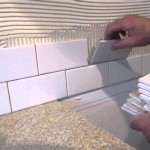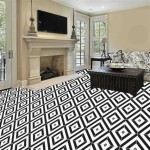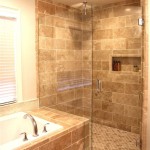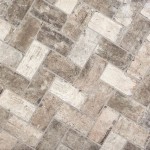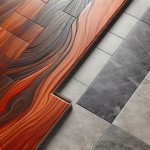Designing the Perfect Shower with Tiles
Whether you're building a new shower or renovating an existing one, the choice of tiles can make a significant impact on the overall design. Here are some key aspects to consider when selecting and using tiles in your shower:
Material and Durability
Tiles come in a variety of materials, each with its own unique properties. For showers, porcelain or ceramic tiles are popular choices due to their durability, ease of cleaning, and resistance to moisture. Glass tiles offer a sleek and modern look and can create a wider, more spacious appearance. Natural stone tiles, such as marble or granite, provide a luxurious and classic touch but require more maintenance.
Size and Shape
The size and shape of the tiles can influence the overall aesthetic of the shower. Small tiles, such as mosaics or subway tiles, can create a classic or vintage look. Larger tiles, such as 12x12" or 18x18", provide a more modern and spacious feel. Non-rectangular tiles, such as hexagons or chevrons, can add a unique and eye-catching accent.
Color and Pattern
The color and pattern of the tiles play a crucial role in setting the mood and ambiance of the shower. Neutral colors, such as white, beige, or gray, offer a timeless and versatile backdrop. Bold colors, such as blue, green, or red, can make a statement and create a more invigorating atmosphere. Mosaic tiles with intricate patterns can add visual interest and texture to the shower design.
Matching Grout and Trim
Grout is the thin material that fills the spaces between tiles and helps to protect them from moisture. It is available in a variety of colors, allowing you to complement or contrast the tiles. Coordinating the color of the grout with the tiles can create a sleek and cohesive look. Trim pieces, such as bullnose or pencil tiles, can be added to the edges of the shower to enhance the design and protect the edges from damage.
Layout and Placement
The layout and placement of the tiles can greatly impact the appearance of the shower. A simple grid pattern is a classic choice that creates a clean and organized look. Herringbone or stacked patterns can add visual interest and movement. Vertical or horizontal banding can create the illusion of height or width, respectively. The placement of accent tiles or niches can further enhance the design and functionality of the shower.
Lighting Considerations
Lighting plays a crucial role in highlighting the beauty of the shower tiles. Proper lighting can enhance the overall ambiance and make the space feel more inviting. Natural light is ideal, but if it is not available, consider using recessed lighting, sconces, or under-tile lighting. The type and placement of the lighting can emphasize certain tiles or patterns, creating a dramatic effect.
By carefully considering these aspects, you can design a shower that is both aesthetically pleasing and functional. From material and durability to color and pattern, every detail contributes to creating the perfect shower experience.

Designing The Perfect Shower 7 Things To Consider Erin Kestenbaum

40 Free Shower Tile Ideas Tips For Choosing Why

Doorless Walk In Shower Ideas For Small Bathrooms Degnan Design Build Remodel

Bathroom Tile Ideas Flooring Backsplash Shower Designs

What Tiles Are Best For Shower Walls Tile Warehouse

29 Striking Shower Tile Ideas For Your Bathroom Remodel

Shower Designs Featuring Large Format Tiles Daltile

Matt Vs Glossy Tiles Which Are Best For Your Shower Hyperion

5 Best Ways For Contemporary Bathroom Design Lx Hausys

Black And White Shower With Brass Gooseneck Head Modern Bathroom
Related Posts

